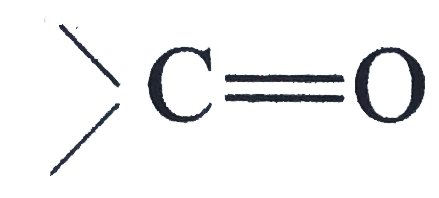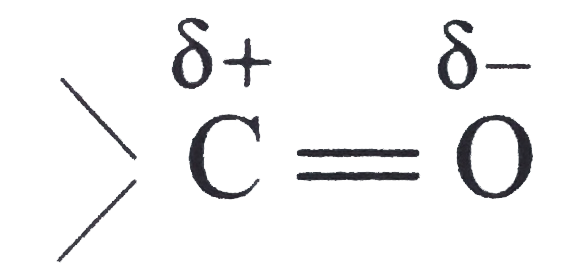Which among the following is most reactive in nucleophilic addition ?
A
FCH2−CHO
B
Cl−CH2−CHO
C
Br−CH2−CHO
D
I−CH2−CHO
Text Solution
The correct Answer is:A
|
Topper's Solved these Questions
- ALDEHYDES, KETONES AND CARBOXYLIC ACIDSBook:NIKITA PUBLICATIONChapter:ALDEHYDES, KETONES AND CARBOXYLIC ACIDSExercise:SECTION - II : CARBOXYLIC ACIDS
Explore 198 Videos
- ALCOHOLS , PHENOLS AND ETHERS Book:NIKITA PUBLICATIONChapter:ALCOHOLS , PHENOLS AND ETHERS Exercise:MCQs
Explore 589 Videos
- BIOMOLECULES Book:NIKITA PUBLICATIONChapter:BIOMOLECULES Exercise:MCQs
Explore 428 Videos
Similar Questions
Knowledge Check
Which among the following is most reactive to give nucleophilic addition?
AFCH2CHOBClCH2CHOCBrCH2CHODICH2CHOWhich among the following is most reactive to give nucleophilic addition?
AFCH2CHOBClCH2CHOCBrCH2CHODICH2CHOAldehydes and ketones ar specially susecptible to nucleophilic addition because carbonyl group
 is polar (due to electronegativity difference between carbon and oxygen)
is polar (due to electronegativity difference between carbon and oxygen)

Positive charge on carbon makes it reactive towards the nucleophili. This addition is catalysed by acid.
Reactivity of carbonyl compound towards nucleophilic addition increases with increases in the electron deficiency at carbonyl carbon. Thus, (-I.E.)groups increase while (+I.E.) groups decrease the reactivity of carbonyl compound.
Which among the following is most reactive to give nucleophilic addtion ?AFCH2CHOBClCH2CHOCBrCH2CHODICH2CHO
Which of the following is most reactive towards nucleophilic addition reactions ?
View SolutionWhich of the following is most reactive towards nucleophilic addition reactions ?
View SolutionWhich among the following is the most reactive?
View SolutionAldehyde and ketone undergo nucleophilic addition reaction because of polarity between >C=O group . The reactivity of carbonyl groups toward nucleophile depends upon the nature of inductive effect of froup present at carbonyl carbon.
Which among the following is more reactive towards nucleophilic addition reaction
View SolutionWhich among the following reaction involves nucleophilic addition followed by elimination of water ?
View Solution
